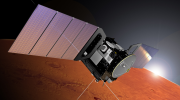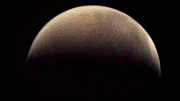Update from ESA’s Mars Express project scientist Dmitri Titov on the recent Phobos flyby results.
Unfortunately, HRSC imaging didn’t work due to a transient issue with the onboard memory, which meant that no data were saved. This happens from time to time on our 12-year-old spacecraft and unfortunately this time it occurred during a flyby.
The good (excellent!) news is that other instruments did acquire data, particularly ASPERA, the Analyzer of Space Plasma and Energetic Atoms, which studied interactions between the solar wind and Phobos. It will take the instrument team some time to analyse and process their results, but the initial report is that all went very well.
The MARSIS radar (the Subsurface Sounding Radar/Altimeter) also operated during flyby. Although data are still being processed, it was possible to ascertain that Phobos was detected both in subsurface sounding mode and through ionosphere sounding.
Two more close encounters with Phobos will occur in 2016. On 4 July, Mars Express will approach Phobos at ~350 km, and on 16 November the spacecraft will flyby as close as 127 km. Both flybys will be used to continue the programme of moon investigations.
Mars Express continues exploring the Red Planet – soon in the company of ExoMars 2016 Trace Gas Orbiter!
We’ll update you here in the blog when we have news.




Discussion: 2 comments
Hello- Would you be so kind as to forward your findings/data regarding the density of Phobos, the % of Phobos that you have calculated and if those voids within Phobos have any particular /recognizable shapes? Thanks so much
We are making a lot of progress for our great future here